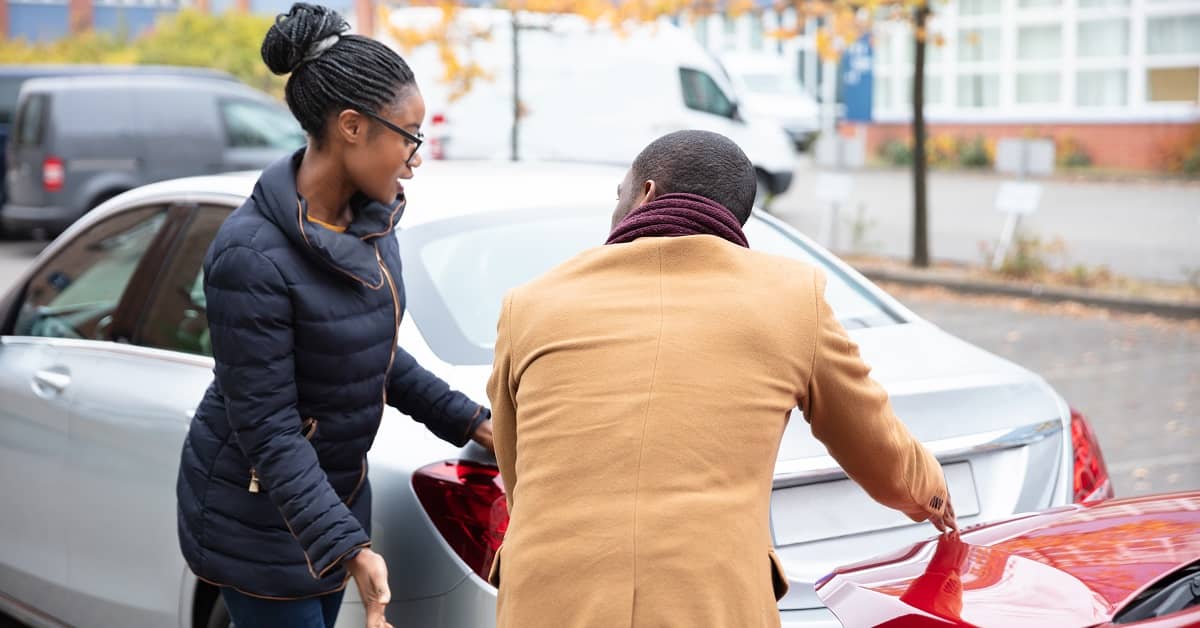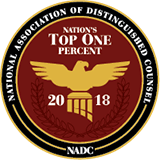
Car accidents are often jarring, traumatic events. They can happen in the blink of an eye and cause serious damage and injuries.
Usually there is someone to blame. Unfortunately, accidents are too often caused by driver negligence, whether that be distracted driving, drunk driving, drowsy driving, or reckless driving.
Victims of these accidents may be able to recover damages from the at-fault party. However, you must be able to prove that the other driver was negligent, and that this negligence resulted in the accident.
There are steps you can take at the scene of the accident to start building your claim against the at-fault driver. However, an experienced car accident attorney can perform a more thorough investigation, collecting evidence, hiring expert witnesses, and – if necessary – arguing your case in court. Contact Colombo Law today for a free consultation in Columbus.
1. Call 911
The first step after any car accident is to call the police. If the other driver tries to talk you out of doing so, even if they offer to write you a check on the spot, you should never agree.
There are a couple of reasons for this, but the most important is that you may not realize the extent of your injuries and damages after a collision. Whiplash, for example, is a common car accident injury that can take hours or even days to manifest, at which point you may realize that your injuries are going to require expensive medical treatment.
If you take some cash or a check after the accident and you do not get the other driver’s information, you will have difficulties recovering compensation for the cost of your treatment. Furthermore, you may be in violation of the law if you fail to report an accident (either by calling 911 at the scene or completing a police report shortly thereafter). In Ohio, accidents in which injuries and/or more than $1,000 in property damage occurs must be reported to the police.
2. Document the Scene of the Accident
While your attorney should be able to collect evidence after an accident on your behalf, some of the most important evidence can be documented at the scene immediately after the accident. This includes the damage to the vehicles, the location of the accident, the weather conditions, and damage to the road and nearby structures.
For example, a twisted guardrail or a skid mark could be an important part of showing that the other driver made a mistake, such as waiting too long to brake because they were distracted. But this evidence can be cleared away quickly, whether by maintenance crews or by the weather.
Of course, if your injuries are serious after an accident, it may be difficult or impossible to document the scene. In these cases, it is best to contact a car accident attorney ASAP. Your lawyer can visit the scene and call in independent investigators to collect evidence on your behalf.
3. Exchange Information with the Other Driver
As with drivers wanting to avoid calling 911, they may also try to avoid exchanging information. The at-fault driver may plead with you or offer some form of financial incentive to “walk away” from the accident and not involve the insurance companies. This may especially be the case if the other driver does not have insurance.
It is important to take steps to protect your rights after an accident. That includes getting the at-fault driver’s insurance information. After all, if you pursue a claim at a later date, you will have no way to find the liable party if you do not get the necessary information at the scene.
Read More: What to Do After a Car Accident That Isn’t Your Fault.
4. Speak to Witnesses
While evidence will play a significant part in proving the other driver’s negligence, witnesses can also be valuable. If they saw the accident unfold, their account of the other driver’s negligence could be a big part of helping you win your claim – especially if it goes to trial.
Your lawyer may be able to track down witnesses after the fact, but that can be much more difficult than approaching witnesses immediately following an accident and getting their story. You should also obtain their contact information so your attorney can reach out to them at a later date.
5. Provide a Statement to the Police
With emotions running high after an accident, it can be difficult for anyone involved to provide an unbiased account of what happened. This is why a police report is so important.
The police will ask for statements from the drivers and occupants of the vehicles involved in the accident. When giving your statement, answer the officer’s questions honestly and provide any details you remember about careless acts the other driver may have committed.
In speaking to the other driver, the police, or anyone involved, do not apologize or make comments suggesting you were at fault. Although you can still recover compensation if you are partially at fault (so long as your negligence is determined to be no greater than 50 percent in contributing to the accident), it can be difficult to overcome earlier admissions – especially ones documented in official reports.
Contact a Car Accident Lawyer
Regardless of how closely you can follow these steps following a car accident, you should reach out to an Ohio car accident attorney who can evaluate your claim and help you pursue compensation. There are several challenging aspects still ahead, including negotiating with insurance companies – who will do everything they can to pay you as little compensation as possible – and, if necessary, presenting your case in court.
Colombo Law has been a trusted advocate for injury victims for more than 20 years. We act quickly on our clients’ behalf to gather all pertinent evidence, build a strong claim, and pursue fair compensation.
Please call Colombo Law at (614) 362-7000 today for a free consultation. Our car accident attorneys serve clients in Columbus and throughout Ohio.










